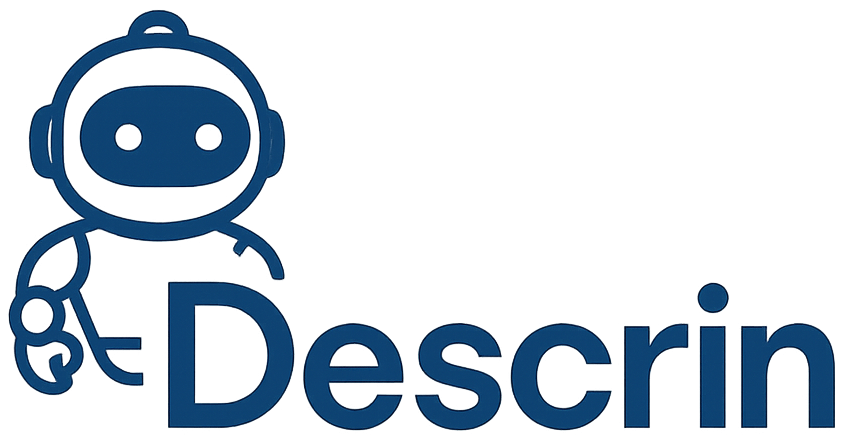Innovative AI Solutions Transforming French-Language Education in Canada

Have you ever struggled to learn complex grammar or pronunciation? Now, imagine having an AI as your language learning buddy. Canadian universities are leading the way with AI in French education, changing how we learn languages.
The world of education is changing fast. AI tools are making learning interactive and tailored to each student. Canadian schools are at the edge of this digital shift, offering new ways to learn French.
AI is breaking down old barriers in French education. It brings students immersive, personalized learning that fits their style and needs. This technology is making learning French fun and effective.
Table of Contents
The Evolution of French Language Education in Canadian Academia
Canadian higher education has seen big changes in language learning. This is especially true for computational linguistics and French language teaching. Now, technology has changed how students learn languages.
Old teaching methods in French faced big problems. Classroom learning had:
- Limited personalized instruction
- Rigid curriculum structures
- Minimal interactive learning opportunities
- Restricted cultural immersion experiences
Digital Transformation in Language Learning
The digital age has changed language learning in schools. New tech in computational linguistics makes learning French more fun and interactive for students.
| Traditional Method | Digital Transformation |
|---|---|
| Textbook-based learning | AI-powered interactive platforms |
| Limited pronunciation practice | Real-time speech recognition |
| Static curriculum | Adaptive learning algorithms |
Current Educational Technology Landscape
Today, Canadian universities use the latest tech for language learning. They offer personalized, immersive learning experiences. This tech uses artificial intelligence to meet each student’s needs.
Students get to use advanced tools for learning. These tools give feedback, cultural context, and track progress. The mix of computational linguistics and tech is a big step up for French education.
AI Use in French-Language Education in Canadian Universities| Innovative AI Solutions Transforming French-Language Education in Canada
Canadian universities are changing French-language education with new technology and AI. They use artificial intelligence to make learning more personal and flexible. This new way of learning is different from old methods.
Universities in Canada are using advanced AI tools to improve French teaching:
- Adaptive learning platforms that tailor lessons to each student
- Intelligent tutoring systems that give feedback right away
- Advanced technology for checking pronunciation and grammar
AI in French education does more than just translate. It looks at how students do, finds where they need help, and makes plans to fix it. Universities are making AI tools that can:
- Make learning plans just for each student
- Help with interactive conversations
- Check how well students can speak French
Researchers are really looking forward to how machine learning can make learning French better and more fun. These tools help students learn French and make education available to more people.
The future of French language education is all about using AI in smart ways that meet each student’s needs.
As Canadian universities lead in using technology, they’re setting a high standard for teaching French with AI. They make learning French more fun, personal, and successful.
Natural Language Processing Innovations in French Teaching
Language technology is changing French language education in big ways. Canadian universities are leading in creating AI solutions. These solutions change how students learn and interact with French.
Advanced natural language processing technologies bring new chances for learning French. These systems help students by offering smart, adaptive support. This makes learning more interactive and personal.
Speech Recognition Technologies
Modern speech recognition helps students improve their French pronunciation. It offers:
- Real-time pronunciation feedback
- Accent reduction coaching
- Interactive listening comprehension exercises
Real-time Translation Capabilities
Now, there are seamless translation tools for learners. These tools help understand complex French contexts. They bridge communication gaps by:
- Providing contextual translations
- Explaining idiomatic expressions
- Supporting vocabulary expansion
Grammar Correction Systems
Natural language processing algorithms analyze student writing with great accuracy. These systems offer:
- Instant grammatical error detection
- Contextual correction suggestions
- Personalized learning recommendations
These technologies make learning French more engaging and effective for students.
Machine Learning Applications for Personalized Learning

Machine learning is changing French language education. It makes learning experiences fit each student’s needs. Now, your learning path can be made just for you, thanks to smart technology.
AI-powered language models study how you learn in real-time. They create learning plans just for you. These systems watch how you do, find areas you need to work on, and adjust the difficulty of what you learn.
- Adaptive content matching individual learning pace
- Intelligent feedback mechanisms
- Dynamic skill assessment tools
If you always find certain grammar hard, machines make special practice for you. On the other hand, if you pick up things fast, you get harder stuff to keep you challenged.
Personalized learning isn’t just about technology—it’s about creating an educational experience that grows with you.
Canadian universities are using these new machine learning methods in French classes. This makes learning more fun, interactive, and effective for students.
Your learning potential is now unlocked by smart, data-driven tech. It fits perfectly to your unique learning style.
Virtual and Augmented Reality in Language Immersion
Educational technology is changing how we learn French. Canadian universities are leading the way with new methods. They make learning French fun and interactive.
Virtual reality lets students practice French in real-life situations. They can talk in digital worlds that feel like real places. This helps them learn French in a deep and useful way.
Interactive Learning Environments
Today’s tech lets students dive into French learning in new ways. They can:
- Have real conversations in virtual settings
- Explore French culture in a hands-on way
- Get language practice that’s tailored just for them
Cultural Integration Through Technology
Augmented reality brings French culture to life. Students can visit places like Montreal virtually. They can see and interact with digital versions of French-speaking environments.
Simulation-based Practice Sessions
Companies like Virtro Technology Inc. in Vancouver are creating advanced AI systems. These systems have virtual characters that talk to learners in real conversations. This helps students:
- Learn professional French terms
- Get ready for job interviews
- Improve their ability to communicate in different situations
Thanks to new tech, learning French is more fun, accessible, and effective than ever.
AI-Powered Assessment and Progress Tracking
The world of French education in Canadian universities is changing fast. New AI technologies are making learning and teaching better. Students can now see how they’re doing, and teachers can help them grow.
AI tools give insights into how well students are learning French. They look at many things, like:
- How well students write in French
- How clear their French sounds
- How much French vocabulary they remember
- How they compare to others
Universities use AI to make learning more personal. Adaptive assessment technologies find out where students need help. This way, teachers can focus on what each student needs.
These AI systems use special algorithms to check students’ work. They give feedback right away. This helps students know what they’re good at and what they need to work on.
“AI is transforming language assessment from a static measurement to a dynamic, continuous learning process.” – Educational Technology Research Center
Thanks to AI, Canadian universities are leading the way in language education. Learning is now more fun and fits each student’s needs better.
Addressing Digital Equity in French Language Education
Digital equity is a big challenge in higher education in Canada, especially for French language learning. The need for new solutions to bridge gaps is urgent. This is especially true for rural, remote, and Indigenous communities.
First, we must recognize the digital divide. Everyone should have equal access to learning tools, no matter where they live or their background.
Rural and Remote Access Solutions
Canadian universities are working hard to solve connectivity issues:
- They’re creating offline AI-powered learning apps.
- They’re making mobile-friendly platforms that use less bandwidth.
- They’re using low-data educational resources.
Indigenous Community Integration
Technology is playing a big role in preserving Indigenous languages and education. AI tools are being made to respect cultural differences and support native language learning.
Accessibility Features
Inclusive design is key in making French language learning tech. Important features include:
- Screen reader compatibility
- Text-to-speech functionality
- An adjustable learning interface
- Multilingual support options
By focusing on digital equity, Canadian higher education is making language learning more accessible and inclusive for everyone.
Collaborative Learning Platforms and AI Integration

Canadian universities are changing French language education with new tools. These tools use educational technology to make learning more interactive. Students can now practice their language skills in different places.
AI-driven platforms are making learning more exciting. They break down old classroom walls. Now, students can have fun learning experiences that boost their language skills:
- Virtual study groups with real-time language translation
- AI-moderated discussion forums
- Peer-to-peer learning tools with intelligent feedback mechanisms
Platforms like Thinkific are leading the way in digital learning. Students can connect and learn French in a way that fits their learning style.
| Platform Feature | Educational Benefits |
|---|---|
| AI Discussion Moderation | Encourages inclusive dialogue |
| Real-time Language Translation | Facilitates multilingual interaction |
| Adaptive Learning Paths | Personalizes language learning experience |
These platforms are a big step forward in education. They help create a community of learners across Canadian universities. This supports learning French in a new way.
The Role of Canadian EdTech Companies
Canadian educational technology firms are leading the way in AI for language learning, especially in French. They are at the forefront of creating new ways for students to learn and interact with languages.
The Canadian EdTech scene is strong in AI for French-language education. Tech innovators and entrepreneurs are making advanced platforms. These platforms use artificial intelligence to make learning languages better.
Local Innovation Success Stories
Many Canadian companies stand out in the educational technology field:
- Montreal-based Idéo Technologies develops AI-driven language learning platforms
- Vancouver’s Thinkific Labs creates personalized educational software
- Toronto’s DialogueTrainer specializes in interactive language simulation tools
International Market Impact
Canadian EdTech companies are growing their presence worldwide. They show great promise in the global educational technology market.
“We punch above our weight class in terms of the number of businesses that provide amazing technology to education,” says Corrine Hua, chief financial officer of Thinkific Labs Inc.
| Company | Specialization | Global Reach |
|---|---|---|
| Idéo Technologies | AI Language Learning | North America, Europe |
| Thinkific Labs | Educational Software | Global Online Platforms |
| DialogueTrainer | Language Simulation | International Education Markets |
These companies are making Canada a key player in AI for education, especially in French. They are changing how we learn languages around the world.
Future Trends and Educational Policy Development

The world of French language education in Canada is changing fast. New language models and tech are leading the way. Policymakers are working hard to create plans that handle AI’s challenges in schools.
Some big trends are coming that will change how we learn languages and use tech in schools:
- Advanced predictive analytics for personalized learning experiences
- Development of sophisticated AI-driven curriculum design
- Enhanced language models with cultural sensitivity
- Robust ethical guidelines for AI implementation
Canadian universities are getting ready for AI. They want AI to help, not replace, teachers. They aim to create intelligent support systems that boost learning and keep things fair.
The goal is to use AI as a tool that helps both students and teachers in French language education.
New policies are focusing on important issues like:
- Data privacy protection
- Algorithmic bias mitigation
- Equitable technology access
- Continuous professional development for educators
As language models get better, Canadian schools are leading in tech. They want AI to be a game-changer for learning languages.
Data Privacy and Ethical Considerations
Computational linguistics in French teaching brings new tech abilities. But, it also raises big questions about data privacy and ethics. These need careful thought.
Digital tools change language learning, but they must protect students. Universities are making strong plans to handle risks from AI learning tools.
Student Data Protection Strategies
Keeping student info safe is key in using computational linguistics. Important steps include:
- Anonymizing personal student data
- Implementing encryption protocols
- Creating clear data use policies
- Setting strict access controls
Ethical AI Implementation Guidelines
Canadian schools are leading in ethical AI rules for French teaching. These rules aim to:
- Reduce algorithmic bias
- Ensure fair learning chances
- Keep learning human-centered
- Support inclusive tech solutions
“Technology should enhance, not replace, the human connection in language learning.” – Dr. Marie Tremblay, Educational Technology Researcher
By focusing on ethics, schools can use computational linguistics. This way, they keep the core human parts of French teaching alive.
Conclusion
AI is changing how we learn French in Canadian universities. New technologies make learning more personal, fun, and easy to access. This goes beyond just sitting in a classroom.
Canada is leading the way in using advanced tech for language learning. Teachers and researchers are making tools that learn with you, give feedback right away, and make learning fun. These changes are not just for French; they’re changing education itself.
The future of AI in education looks bright. We’ll see more virtual reality and smart tests. This tech will help everyone learn, making language skills more accessible and interesting.
The start of AI in teaching French is exciting. With more investment in tech, students everywhere will get better learning tools. These tools will make learning a new language fun and easy.
FAQ
How are Canadian universities using AI to enhance French language education?
Canadian universities are using AI to make learning French more fun and personal. They use advanced AI like Natural Language Processing (NLP) and machine learning. This helps create learning tools that fit each student’s needs.
These tools include smart tutoring systems and virtual environments. They adapt to how each student learns best.
What specific AI technologies are being used in French language teaching?
Universities are using AI for many things. They use speech recognition to help with pronunciation. They also have real-time translation systems and tools that check grammar.
Machine learning helps analyze how students do. This way, learning paths can be made just for them. Virtual reality is also used to make learning feel like real life.
Are there concerns about data privacy and ethics in AI-enhanced language education?
Yes, there are worries about keeping student data safe. Canadian schools are working hard to protect this information. They have strong data security and clear policies on how data is used.
They also make sure AI is used in a way that respects students. They aim to keep the human touch in teaching.
How are AI technologies making French language learning more accessible?
AI is making learning French easier for everyone. It’s creating apps that work on phones and offline tools. It’s also making learning accessible for people with disabilities.
Universities want to make sure these tools reach everyone. This includes people in rural and Indigenous communities.
What role do Canadian EdTech companies play in AI language education?
Canadian EdTech companies are leading the way in AI for learning French. They work with universities to create new technologies. This helps Canada stand out in educational technology.
How do AI tools personalize the French language learning experience?
AI tools use machine learning to tailor learning to each student. They adjust the difficulty of content and give feedback. This helps students learn at their own pace.
These tools can also spot what a student is good at and what they need to work on. This makes learning more effective.
What challenges exist in implementing AI in language education?
There are a few big challenges. One is making sure everyone has access to these tools. There’s also the need to keep student data safe and avoid biases in AI.
Universities are working on these issues. They want to make sure AI helps education without causing problems.
Can AI completely replace human French language instructors?
No, AI is meant to help, not replace teachers. It’s designed to make learning better by offering personalized tools. But, teachers bring important things like cultural understanding and emotional connection.
AI can’t replace the human touch in teaching. It’s meant to enhance the learning experience, not take over.







